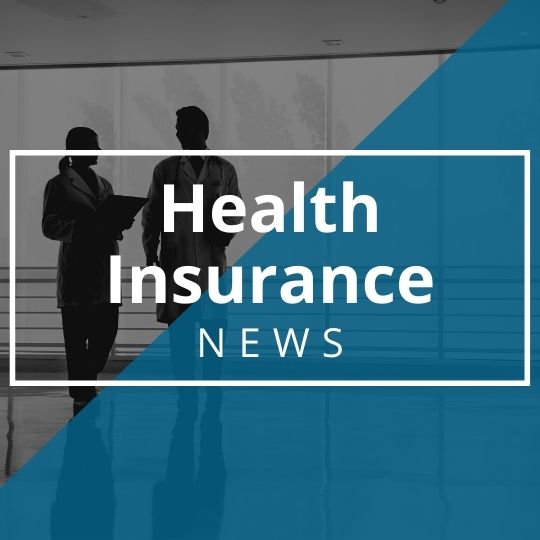Choosing the right health insurance plan for your family is one of the most important decisions you can make. With so many options available, it can be overwhelming to determine which plan will best meet your family’s needs. Here are key factors to consider when selecting a health insurance plan, including coverage for children, maternity care, and more.
Shortcuts: Considerations For: Purchasing Coverage for Children | Expectant Families | Comprehensive Coverage | Cost Considerations | Network Considerations | Additional Benefits
Things to Consider When Purchasing Coverage for Children
Children’s health needs can vary widely, from regular check-ups and vaccinations to treatment for illnesses and injuries. When evaluating health insurance plans, pay attention to the following aspects:
1. Pediatric Care
Ensure the plan covers routine pediatric visits, immunizations, and screenings. These are essential for monitoring your child’s growth and development.
2. Specialist Care
Check if the plan includes access to pediatric specialists, such as allergists, endocrinologists, and behavioral health providers. This is crucial if your child has or develops specific health conditions.
3. Emergency Services
Accidents happen, and children are often the most frequent visitors to emergency rooms. Confirm that emergency services are covered, including ER visits and urgent care. Inside tip: hospitals are now required to disclose the cost of their services online, so familiarize yourself with the costs of local hospitals before you actually need them.
Considerations for Expectant Families: Maternity and Newborn Care
For families planning to have children or expecting a baby, maternity and newborn care coverage is vital. Here’s what to look for:
1. Prenatal Care
Prenatal visits are critical for monitoring the health of both the mother and the baby during pregnancy. Ensure the plan covers regular check-ups, ultrasounds, and any necessary prenatal tests.
2. Labor and Delivery
Review the coverage for labor and delivery, including hospital stays, birthing centers, and any potential complications. Some plans may also cover home births.
3. Postnatal Care
After the baby is born, postnatal care for both the mother and the newborn is essential. Check if the plan includes coverage for follow-up visits, lactation consultations, and newborn screenings.

Pay Attention to Comprehensive Family Coverage
Beyond children’s and maternity care, consider the overall family coverage offered by the plan:
1. Preventive Care
Preventive care helps detect and prevent health issues before they become serious. Look for plans that cover annual check-ups, vaccinations, and screenings for all family members
2. Chronic Condition Management
If anyone in your family has a chronic condition, such as asthma, diabetes, or hypertension, ensure the plan covers the necessary medications, specialist visits, and ongoing treatment.
3. Mental Health Services
Mental health is as important as physical health. Check for coverage of mental health services, including counseling, therapy sessions, and psychiatric care. Many mental health services are now mandated for coverage by ACA-compliant health plans.

Cost Considerations
Understanding the costs associated with health insurance is crucial for budgeting. Here are the primary cost factors to consider:
1. Premiums
Premiums are the monthly payments you make to maintain your health insurance coverage. Compare premiums across different plans to find one that fits your budget.
2. Deductibles
The deductible is the amount you pay out-of-pocket before your insurance begins to cover expenses. Higher deductibles usually mean lower premiums, but it’s essential to choose a deductible that your family can afford. Contrary to popular belief, there are ways to truly get your money’s worth out of high-deductible health plans, read about how here.
3. Copayments and Coinsurance
Copayments are fixed amounts you pay for specific services, while coinsurance is a percentage of the cost of care. Review these costs to understand your out-of-pocket expenses for doctor visits, prescriptions, and other services.
4. Out-of-Pocket Maximums
The out-of-pocket maximum is the most you’ll have to pay for covered services in a year. Once you reach this limit, your insurance covers 100% of the costs. This is an important factor for protecting your family from high medical expenses.
Pay Attention To These Network Considerations
Health insurance plans typically have a network of preferred providers. Here’s what to keep in mind:
1. In-Network vs. Out-of-Network
Using in-network providers usually costs less than out-of-network providers. Ensure your preferred doctors, hospitals, and specialists are in-network.
2. Provider Availability
Check the availability of in-network providers, especially specialists. Access to a wide range of providers ensures you can get the care you need without significant delays or travel.
…And Finally, Consider These Additional Benefits
Some health insurance plans offer additional benefits that can be valuable for families:
1. Telehealth Services
Telehealth services allow you to consult with healthcare providers remotely. This is especially convenient for busy families and can reduce the need for in-person visits.
2. Wellness Programs
Many plans include wellness programs that offer incentives for healthy behaviors, such as gym memberships, weight loss programs, and smoking cessation support.
3. Prescription Coverage
Ensure the plan covers a broad range of prescription medications and review the formulary to see if your family’s medications are included.

In Conclusion…
Choosing the right health insurance plan for your family involves careful consideration of various factors, including coverage for children, maternity care, overall family health needs, costs, and provider networks. By taking the time to evaluate these aspects, you can find a plan that offers the best protection and peace of mind for your loved ones.
For more detailed information about family health insurance options or to find the best plan for your family, call us at (855) 218-3447 or click here to get in touch. Our experts are here to help you navigate your healthcare needs!
Family Photo by cottonbro studio: https://www.pexels.com/photo/family-having-meal-at-the-table-3171200/
Expectant Mother Photo by MART PRODUCTION: https://www.pexels.com/photo/close-up-photo-of-pregnant-woman-7088487/
Credit Cards Photo by Pixabay: https://www.pexels.com/photo/close-up-photography-two-brown-cards-259200/
 Call Our Insurance Hotline:
Call Our Insurance Hotline:



















